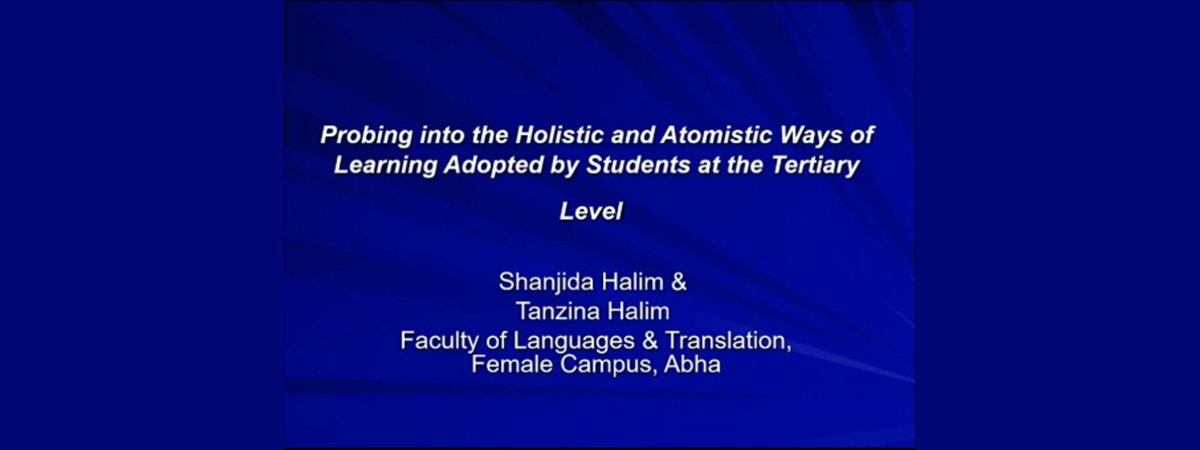
Probing into the Holistic and Atomistic Ways of Learning Adopted by Students at the Tertiary Level
On November 25, 2020, the Language Research Center at the Faculty of Languages and Translation hosted a webinar titled "Probing into the Holistic and Atomistic Ways of Learning Adopted by Students at the Tertiary Level." The event emphasized the critical role of quality teaching in student learning. Presenters Ms. Tanzina Halim and Ms. Shanjida Halim began the webinar citing works by Tyler (2013) and Taba (1962), stressing the value of teaching that transcends the classroom, impacting students' lives beyond school, rather than mere rote memorization.
The presenters framed learning as a multifaceted phenomenon shaped by a myriad of factors. They highlighted two primary approaches—Holistic and Atomistic—differentiating them based on their unique characteristics. They posited that a Holistic approach enables learners to maintain structure, emphasizing the whole in relation to its constituent parts. In contrast, the Atomistic approach encourages learners to deconstruct the structure, focusing on individual parts. The presenters emphasized that the Holistic approach offers in-depth learning, while the Atomistic approach, largely centered on memorization, delivers a surface-level understanding with limited emphasis on meaning.
Drawing on the works of Marton & Saljo (1984) and Process & Millar (1989), the presenters opined that the Holistic approach leads to superior learning outcomes, while the Atomistic approach often results in subpar results. They elaborated on the characteristics of both approaches and discussed factors influencing learners' adoption of these approaches at the tertiary level. They underscored the need for educators to comprehend 'deep' and 'surface' learning approaches, promoting active learning by making lessons engaging and stimulating.
The presenters concluded that learning should be viewed as the acquisition of new concepts and beliefs, suggesting a need for a paradigm shift in educators' understanding of 'deep' and 'surface' learning approaches. The webinar proved to be a highly interactive forum, fostering insights into effective teaching practices that lead to improved learning outcomes. With its well-structured, insightful, and rich content, the webinar saw active participation from both male and female faculty members.
Reiterating its commitment to enhancing the learning experience, the Bachelor of Arts in English program at the Faculty of Languages and Translation pledged to ensure that teaching and learning strategies remain student-centered and promote active learning.
